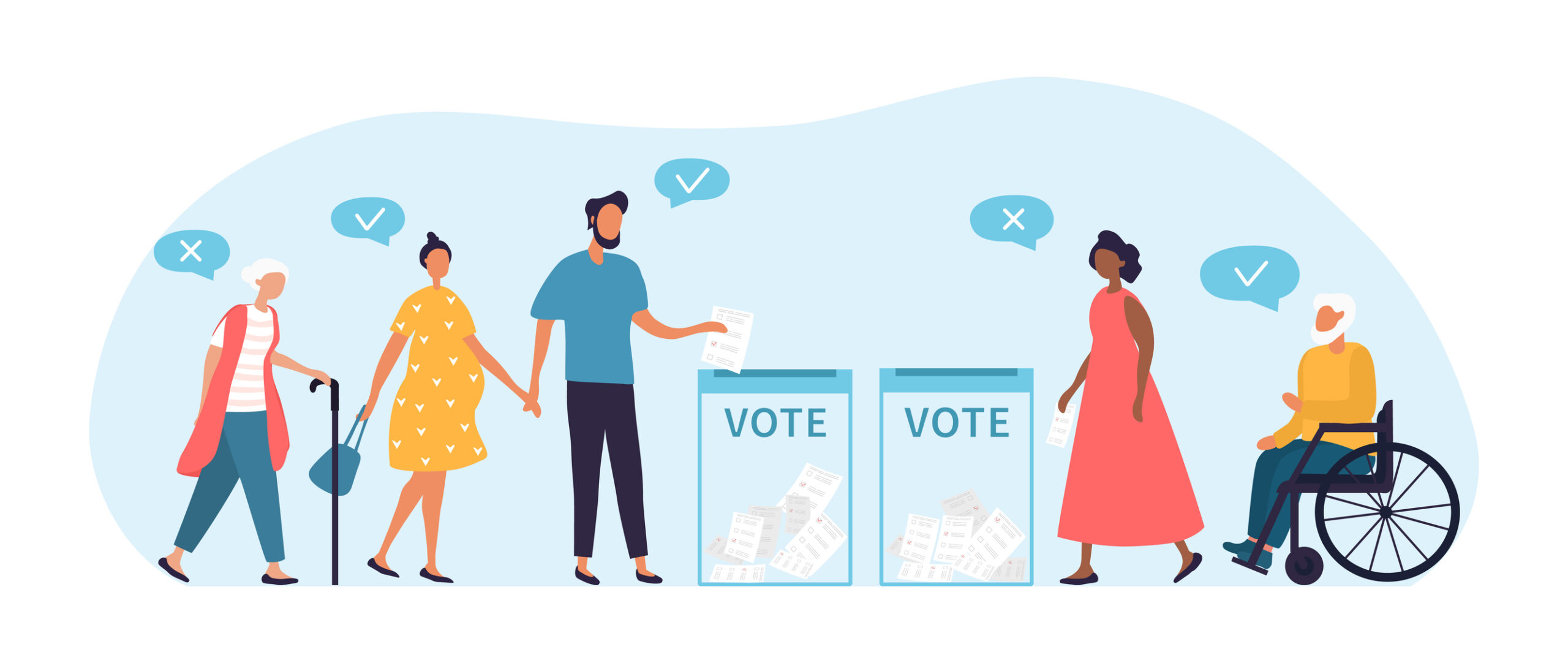Written by: Rachel Brauner
Voting is not just a right; it’s a powerful way to shape the future. But for many individuals with disabilities, navigating the voting process can feel like an uphill battle. Whether you’re an individual with disabilities or assisting someone who is, voting in person, by mail, or with special accommodations, it’s essential to be informed and prepared. Accessibility and inclusivity have come a long way, and there are more options than ever to ensure that everyone can participate in the upcoming election. Below, you’ll find the resources and information you need to help ensure your vote is counted.
Rights of Voters with Disabilities
The rights of voters with disabilities are protected under several federal laws, including the Americans with Disabilities Act (ADA), the Voting Rights Act of 1965, and the Help America Vote Act (HAVA). These laws ensure that individuals with disabilities have the same opportunity to vote as anyone else, whether in person, by mail, or using accessible voting equipment.
According to ADA, key rights include:
- Accessible Polling Places: Polling places must be accessible to individuals with disabilities. This includes accessible parking, entrances, voting areas, and pathways.
- Assistance in Voting: Voters with disabilities have the right to receive assistance from a person of their choice, or they can request help from election workers. However, the helper cannot be the voter’s employer or union representative.
- Accessible Voting Machines: Polling places are required to have at least one accessible voting machine for individuals with disabilities, such as those with vision or mobility impairments.
- Alternative Voting Methods: If a voter cannot access a polling place, alternative voting methods, such as absentee ballots or curbside voting, must be available.
Voters with disabilities can receive assistance both when registering to vote and when casting their ballots. If you need help voting at a polling location, explore these examples from the Texas Council for Developmental Disabilities. However, keep in mind that voting laws vary by state, so be sure to check your state’s specific regulations.
Ballot Drop Box Access
Ballot drop boxes provide a convenient and secure way for voters to return their mail-in ballots. However, it’s essential to ensure that these drop boxes are accessible to all voters, including those with disabilities.
ADA key considerations for accessible ballot drop boxes include:
- Location and Placement: Drop boxes should be placed in locations that are fully accessible, with clear, unobstructed paths. They should be located on ground floors or areas with ramp access.
- Height and Reach: The height of the drop box should be within reach for individuals using wheelchairs or other mobility devices. The recommended height is between 28 to 34 inches from the ground.
- Signage and Instructions: Clear signage with instructions in large print and braille should be provided near the drop box. The area should also be well-lit to assist individuals with vision impairments.
- Curbside Drop Boxes: If possible, providing curbside drop boxes can enhance accessibility for individuals who have difficulty leaving their vehicles.
ADA Checklist for Polling Places
Polling places must adhere to ADA guidelines to ensure accessibility for voters with disabilities. Here’s a checklist to ensure that your polling place is compliant:
- Parking:
- Are there accessible parking spaces available near the entrance?
- Are the accessible spaces clearly marked with signs?
- Entrance:
- Is the entrance accessible with ramps, automatic doors, or doorways wide enough for wheelchairs?
- Are the door thresholds low enough to prevent tripping?
- Pathways:
- Are the pathways to the voting area clear of obstacles and wide enough for wheelchairs?
- Are there handrails on ramps and stairs?
- Voting Area:
- Is the voting area spacious enough to accommodate voters with mobility devices?
- Is there at least one accessible voting machine available?
- Are the voting booths at a height that is accessible for all voters?
- Restrooms:
- If restrooms are available, are they accessible with grab bars, wide stalls, and sinks at an appropriate height?
- Staff Training:
- Are poll workers trained to assist voters with disabilities?
- Do they know how to operate accessible voting machines and provide assistance when needed?
- Emergency Preparedness:
- Are there procedures in place to assist voters with disabilities in case of an emergency?
For more information or to find out specific accommodations available in your location, check with your local or state elections administrator.
References
Americans with Disabilities Act. (2020, February 20). ADA Checklist for Polling Places. Retrieved August 14, 2024, from https://www.ada.gov/resources/polling-places-checklist/
Americans with Disabilities Act. (2024, April 18). The Americans with Disabilities Act and Other Federal Laws Protecting the Rights of Voters with Disabilities. Retrieved August 14, 2024, from https://www.ada.gov/resources/protecting-voter-rights/
Texas Council for Developmental Disabilities (n.d.). Voting Information: Resources for voters with disabilities and poll workers. Retrieved August 14, 2024, from https://tcdd.texas.gov/policy/voting-information/
(*Image Source: iStockphoto ID 1279372491, Rudzhan Nagiev)













